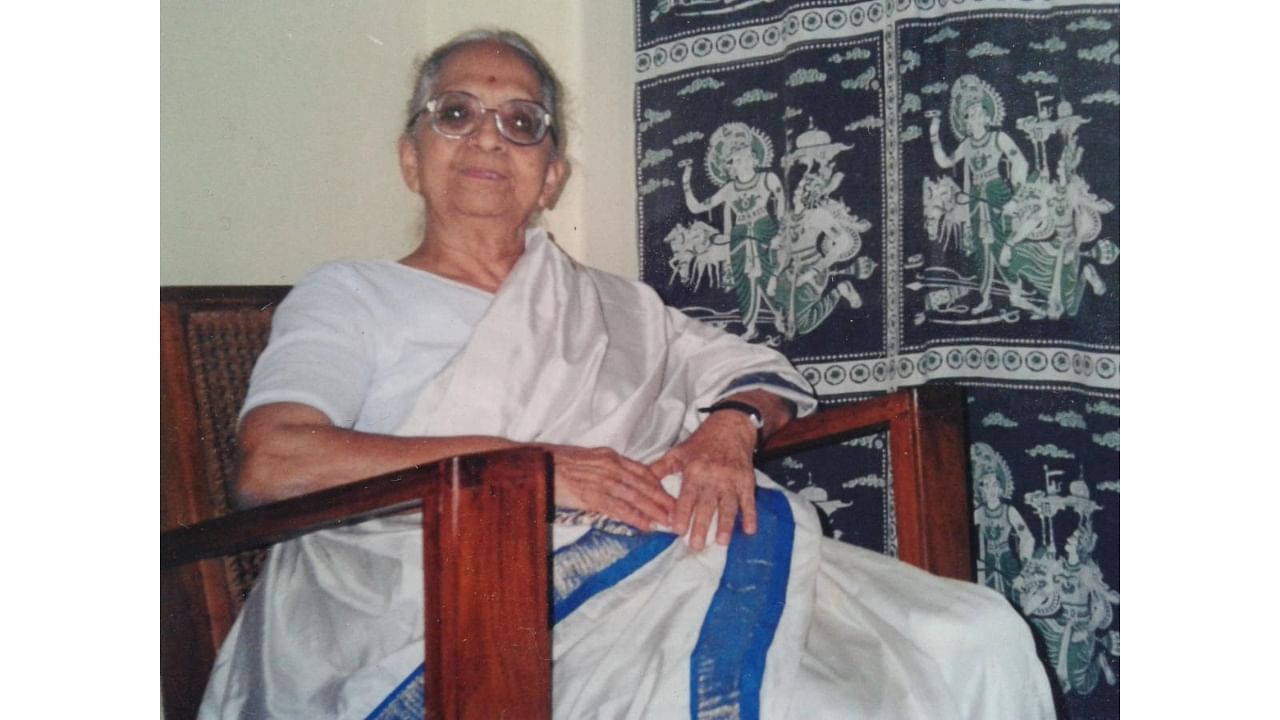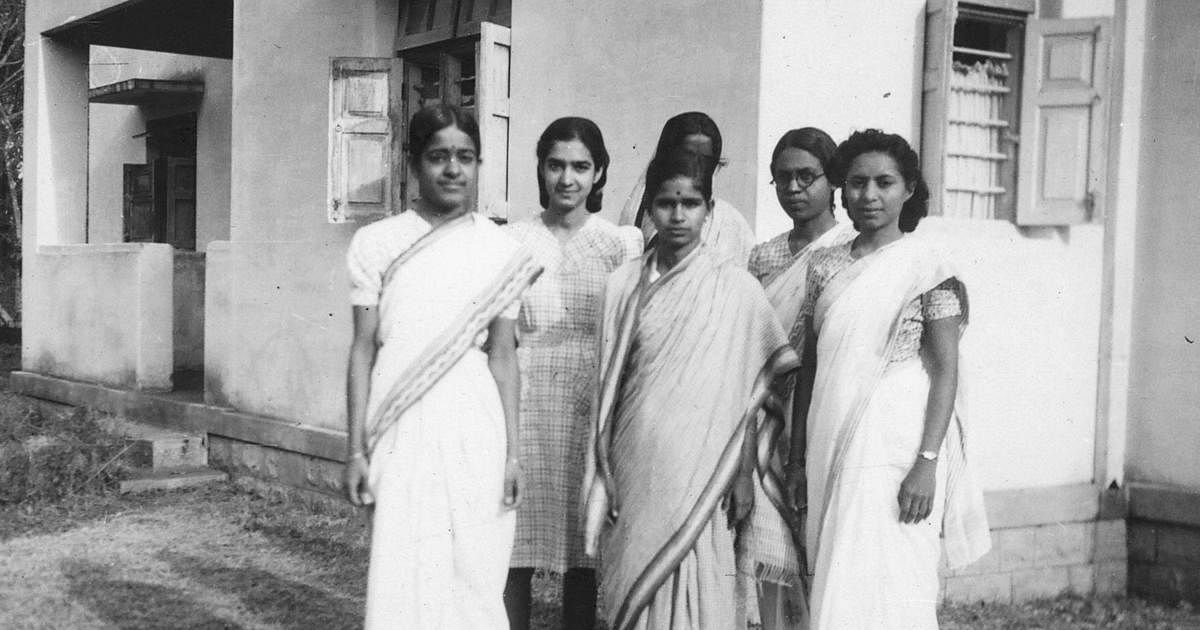

More than half a century ago, a woman professor at the Indian Institute of Science (IISc) was called by her department head and told, “Tomorrow we have an important person visiting us. Please wear a beautiful saree; you will be handing him a bouquet.” Irritated, she flew into a rage and said, “I am not going to wear a beautiful saree or give a bouquet to anyone. There are so many men here, why don’t they give the bouquet?” This lady was Dr Rajeswari Chatterjee. Born in 1922, Dr Rajeswari Chatterjee was the first woman faculty of the Indian Institute of Science (IISc). In 2010, when I visited her for the last time, she still remembered the incident.
A first-rank holder in MSc (Mathematics), Dr Rajeswari joined IISc in 1943 and 3 years later obtained DIISc. In 1946, during World War II, she sailed on an American Armed Forces’ ship to reach San Francisco. She obtained her master’s and doctoral degree in Engineering from Michigan University. Her doctoral research was related to basic trigger circuits. Those were the early days of computers. In 1953, she returned to IISc to become a lecturer in the Electrical Communication Engineering department. The same year she married Dr Sisir Kumar Chatterjee. She published more than 110 papers related to microwave engineering, electronic equipment, and antenna.
Another eminent scientist is Prof H S Savithri. Born in 1951, she was the first woman scientist to be honoured with the Karnataka Rajyotsava Prashasti in 2021. With an MSc (Chemistry) degree, she joined IISc in 1972. Even after her marriage in 1976, she continued her research. In 1976, she submitted her thesis on December 9, and her son was born on December 20. Subsequently, she did her postdoctoral research at Purdue University in the USA for four years on protein chemistry and plant virology.
In 1981, H S Savithri returned to the Department of Biochemistry at IISc and did her pioneering research on the ‘architecture, genome organisation and expression of plant viruses’. It took her eight years to become a faculty at Biochemistry which had 20 faculty, all men. She rose to be the first and only woman chairperson of the Department of Biochemistry. She has published more than 220 scientific papers.
In 2022, when I met her again, I came to know that the department has seen only four women faculty in its history of 101 years! She said, “You need to be at the right place at the right time.” I laughed and quipped, “And of the right gender.” Recently, when I visited the IISc homepage, I was pleasantly surprised to see a special drive to recruit women faculty!
First of many
It was never easy for women to enter IISc. In 1933, Nobel Laureate Sir C V Raman denied Kamala Bhagwat admission in IISc despite her high marks because she was a woman. She sat on Satyagraha outside his office and was finally admitted with humiliating restrictions. She worked on ‘pulse proteins’ and with an MSc degree in hand left for the UK. In 1939, she earned her PhD at Cambridge University and became the first Indian woman to receive a PhD in science.
In the 1990s, when I set out to unearth stories of women scientists of Karnataka, I was amazed to meet Dr A R Kasturibai. Born in 1925, she completed her MSc in Zoology and travelled to Allahabad to get her doctoral degree. It was not an easy task to carry Microhyla frogs alive from Bangalore to Allahabad for her research. She obtained her DPhil in 1947 and did post-doctoral research on protozoology at Max Planck University in Germany. It sounds incredible that a young, unmarried girl in those days travelled alone to Germany, Japan, Korea, America and Malaysia for research.
I was also lucky to meet Dr Bhavani Belavadi, who was the first woman to get a ‘Doctor of Science’ from Mysore University. Born in 1927, her research established that ascorbic acid facilitates the control of diabetes. In the mid-1950s, container milk powder was promoted as superior to breast milk. As part of a World Health Organisation research team, Dr Bhavani was involved in busting this myth and establishing that breast milk is the best for infants.
Overcoming barriers
Historically, women had to overcome major obstacles to become scientists often at the expense of their personal lives. Perhaps, it should not come as a surprise that Dr Kasturibai and Dr Belavadi chose to remain unmarried. Thankfully, with emerging support systems, it has become possible to balance work and home today.
For Dr Pratima Murthy, the second woman director of the National Institute of Mental Health and Neurosciences (NIMHANS) in its history of more than 170 years, work-life balance was never an issue. She is blessed with supportive in-laws and her parents live close by. Dr Pratima, a leading scientist in the field of addiction psychiatry has published more than 300 papers and has been instrumental in developing the Centre for Addiction Medicine at NIMHANS.
Sadly, out of 40 faculty at NIMHANS' psychiatry department, there are only six women. However, with almost 50% of entrants to the psychology department at NIMHANS being women, hopefully, that trend will change.
This women’s day, let us remember all the brave women who walked the pathless land to break the barriers that kept women out of science.
(The author is an alumnus of IISc and has written several books on women scientists. She was a chief designer and general manager at Hindustan Aeronautics Limited.)